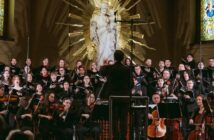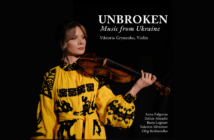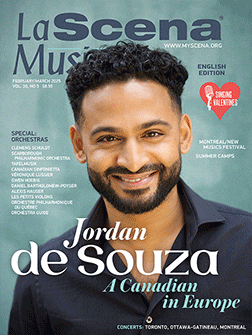The return of esteemed conductor Kent Nagano marked the first of Orchestre symphonique de Montréal’s festive December celebrations. Under the banner Le temps des fêtes avec Nagano (‘Tis the Season with Kent Nagano), the OSM presented a program ranging from cheerful Christmas ballets to dark and biblical storytelling including excerpts from The Nutcracker, a brand new oratorio, and an adaptation of Vivaldi’s Four Seasons. Though Nagano has not served as the OSM’s Music Director since 2020, he has continued to grace the Maison symphonique stage during past holiday seasons, and his presence is always welcome.
The highlights of the evening were the excerpts from Pyotr Ilyich Tchaikovsky’s The Nutcracker. Though I — an ardent Christmas fanatic — have never seen the ballet itself in full, it was still a joy to hear the wonderful melodies played live.
With The Nutcracker so embedded in various cartoons or commercials, many of its classic melodies played by the OSM were known to all — most notably, the accented trumpet and skipping string response in the “March”; the bell-like celesta in “Dance of the Sugar-Plum Fairy”; the dynamic and percussive “Trépak (Russian Dance)”; the playful flutes in “Dance of the Reed Flutes”, and the dreamy harp glissandi, the call and response of horns and clarinet and swell into the strings in “Waltz of the Flowers.”
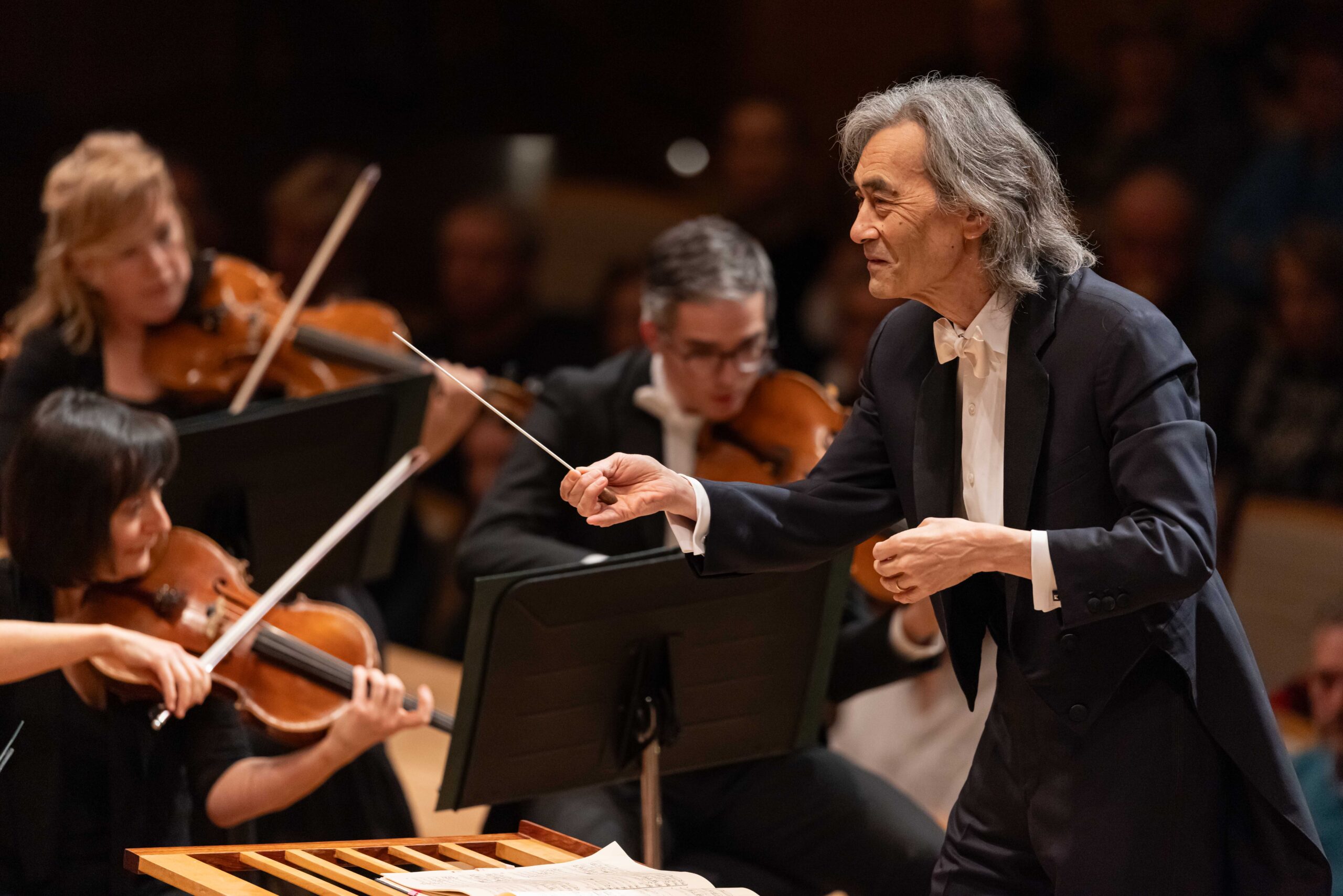
Kent Nagano conducting Orchestre symphonique de Montréal. Photo: Antoine Saito
In addition to “Coffee (Arabian Dance)” and “Tea (Chinese Dance),” Nagano led the orchestra through two additional “Divertissement” pieces that are not included in Tchaikovsky’s The Nutcracker Suite: “Chocolate (Spanish Dance)” and “Mother Ginger.” Nagano maintained wonderful pacing throughout these pieces. He exhibited mastery of the interplay between delicate and more robust fragments, evoking the imagery of toys, snow, and the sugary Land of Sweets in his controlled and elegant conducting.
The OSM took the opportunity to present a new take on a Christmas oratorio with the world premiere of Cent soleils, the fifth piece commissioned by the OSM from composer Matthew Ricketts. A collaboration between Ricketts and fellow Canadians Alain Farah (librettist) and Marie-Nicole Lemieux (contralto), Cent soleils is a reworking of the biblical Nativity scene, with King Herod threatened by the birth of a child. Each of the nine parts is meant to be a different scene as the sky’s canvas is obscured by a solar eclipse and the animals gain the power of speech.

Marie-Nicole Lemieux (contralto) with Orchestre symphonique de Montréal. Photo: Antoine Saito
The oratorio opens ominously, setting the tone for the entire piece. Low woodwinds rumble in the background, their tones clashing to create a sense of apprehension. The text speaks of treachery with a few comical moments to punctuate the otherwise forlorn quality of the libretto. Mentions of a blinking tracking bug in a bottle, airplanes, satellites, and the word “Bethlehem” in Arabic and Hebrew allude to more current political events.
Lemieux’s contribution was creditable. With rich tone, the French text was well-enunciated. Her resonant and dramatic voice was perfect for the piece’s darkness. Unfortunately, the score itself is not that expressive with dynamic variation significantly lacking. The explosion upon Herod’s arrival was underwhelming and the mournful trombone’s descending slide signifying the mockingbird’s murder was almost cartoon-like. The OSM itself seemed vastly underutilized with too many dull moments and very sparse orchestration.
Lastly, the OSM presented the North American premiere of Uzbek composer Aziza Sadikova’s Farbenzeiten (Colour Times), an adaptation of Antonio Vivaldi’s famous Four Seasons. Though the original piece highlights the solo violin in each of its four concertos, Sadikova’s version also includes oboe, trumpet, cello, and percussion solos to reinvent the piece.
Her adapted instrumentation is meant to “expand the sonic palette” of Vivaldi’s score, and was inspired by the history and everyday sounds of his time. This is not the first time that Vivaldi’s Four Seasons has been reinterpreted, of course—but if the Ricketts oratorio was under-orchestrated, Sadikova may have gone a little too far in the opposite direction.
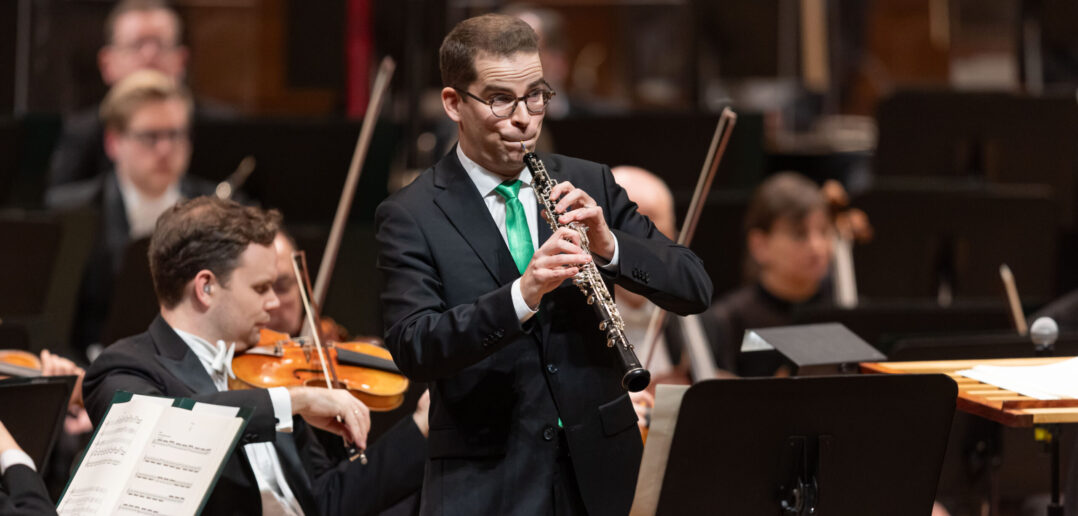
Vincent Boilard (oboe) with Orchestre symphonique de Montréal. Photo: Antoine Saito
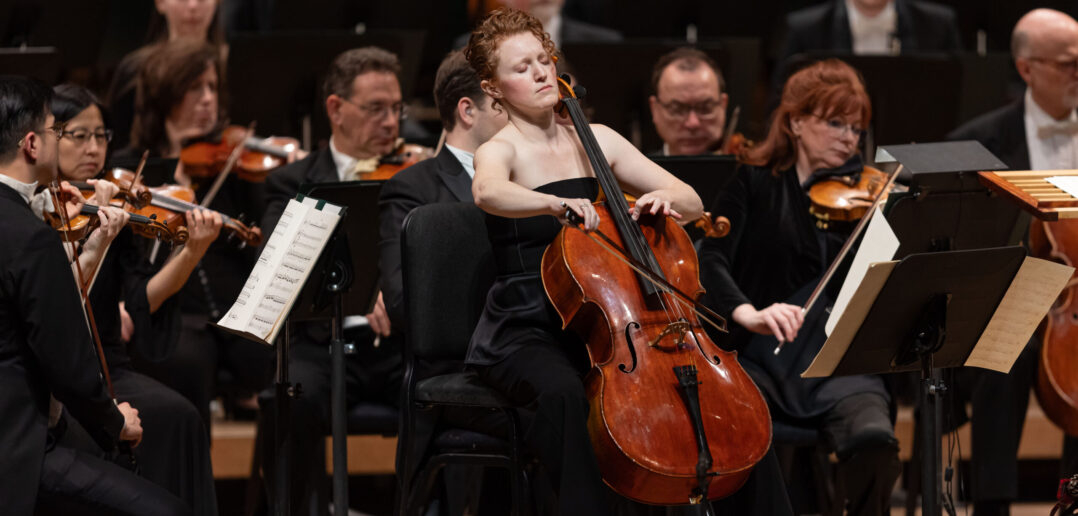
Anna Burden (cello) with Orchestre symphonique de Montréal. Photo: Antoine Saito

Paul Merkelo (trumpet) with Orchestre symphonique de Montréal. Photo: Antoine Saito

Serge Desgagnés (percussion) with Orchestre symphonique de Montréal. Photo: Antoine Saito
That is not to say that Vincent Boilard (oboe solo for “Spring”), Anna Burden (cello solo for “Summer”), Paul Merkelo (trumpet solo for “Autumn”) and Serge Desgagnés (percussion solo for “Winter”) did not perform well. The oboe was initially drowned out by the orchestra and the arrangement lacked the same bounce as in the original “Spring” theme. All the players were more than adequate, and Desgagnés’ work on the marimba was especially fascinating.
However, my biggest gripe was Sadikova’s added percussion throughout which did not enhance the piece. A piercing ring returned over and over, pervading the piece like a case of tinnitus. Coupled with an excessive cacophony of percussion during “Summer”—rustling wind chimes and loud tubular bells—the sonic soundscape became overly embellished and distracting.
Though there were perhaps some new sounds throughout this concert that I have yet to fully appreciate, I admired the spirit of experimentation of this diverse program. I look forward to Nagano’s return to our music hall.
Orchestre symphonique de Montréal’s holiday programming continues throughout December.



